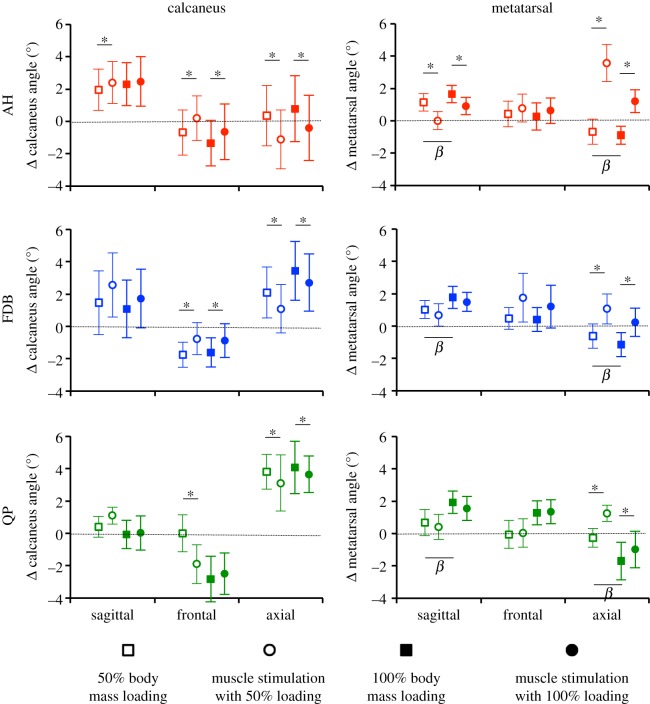Figure 7.
Changes in calcaneal and metatarsal segment angles owing to passive loading and intrinsic foot muscle stimulation. Group means ± s.e. for changes in calcaneal and metatarsal segment angles owing to loading, 50% (open) and 100% (filled) body mass as well as the subsequent changes in segment angles occurring with stimulation of abductor hallucis (AH, red), flexor digitorum brevis (FDB, blue) and quadratus plantae (QP, green) muscles. Segment angles are shown in response to loading (squares) and stimulation (circles). Angular rotations are defined relative to the laboratory coordinate system (x-lateral, y-anterior, z-upward) and according to an x–y–z Cardan sequence of rotations, with extension–flexion (positive extension) as the rotation about the x-axis, inversion–eversion (positive inversion) as the rotation about the y-axis and abduction–adduction (positive adduction) as the rotation about the z-axis. Segment angles are normalized to the seated, unloaded segment angle, such that zero degrees equals the unloaded segment angle for all axes. β indicates significant effect of load (100% versus 50% body mass) on segment angle. Asterisk indicates significant change in segment angle owing to muscle stimulation. (Online version in colour.)

